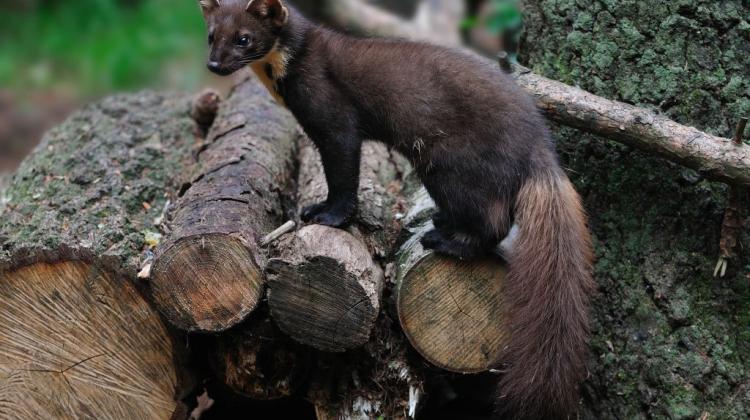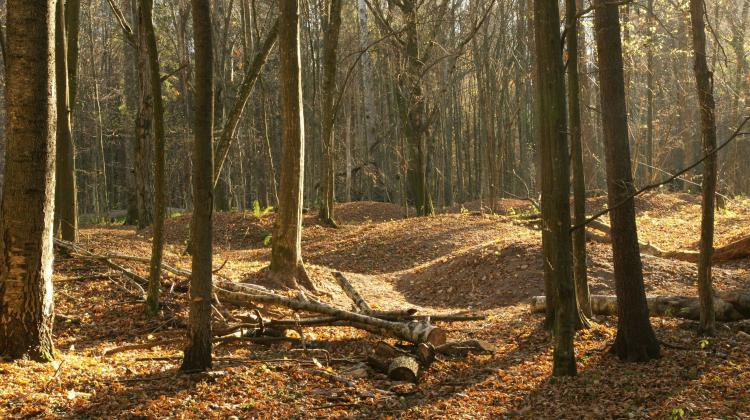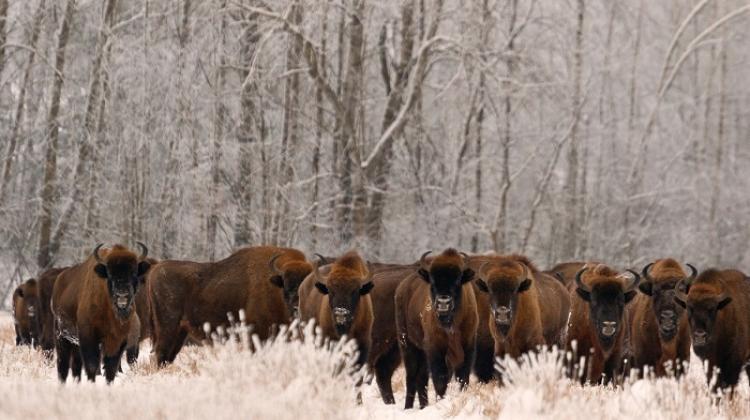Two species of marten walk different paths
 Pine marten. Photo: Fotolia
Pine marten. Photo: Fotolia
Although in Europe, and even in Mazovia beech marten and pine marten they live close to each other, in the Białowieża Forest area they divided the environment between the two species and consistently avoid each other - demonstrated the researchers from the Mammal Research Institute PAS in Białowieża.
Prof. Andrzej Zalewski and Anna Wereszczuk from the Mammal Research Institute PAS published the results of their research in the journal "PLoS ONE".
"Beech marten (also called stone marten) and pine marten (pineten) surprised us in the Białowieża Forest with an unprecedented division of environments. According to our research, beech marten inhabits only villages and pine marten only forests, mostly deciduous ones. The most interesting, however, is the fact that each species clearly avoids the environments in which the other species is present" - noted Anna Wereszczuk.
Prof. Andrzej Zalewski and Anna Wereszczuk were able to monitor the environmental preferences and activity of martens with telemetry collars, which allowed to locate animals in different environments at any time of day or night.
According to their observations, the two species have completely separated their habitat niches in the forest, which was not observed before either in Central Europe, where they coexist, or in central Poland in Mazovia. "Although the Polish species names suggest preferred place of occurrence, in fact it is not so obvious, as evidenced by numerous examples from Europe" - noted Anna Wereszczuk.
"The fact that beech marten is heavier than pine marten suggests that it is not interspecies competition that pushed her to villages, but that it is the optimal environment for it... What then are its reasons for so rigorously avoiding the forest?" - wondered the authors of the publication.
They believe that it can be explained by the different adaptations to the colder climate of north-eastern Polish. "Pine marten occurs in the boreal forest and is better adapted to survive harsh winters with low temperatures than beech marten, which evolved in the subtropical forests of central Asia. Pine marten copes well during snowy and cold winters in the Białowieża Forest, limiting its activity during strong frost and feeding on easily accessible carrion. Meanwhile, beech marten chooses to hide in attics of houses, preferably heated ones, or barns, where it hunts for rodents, thus reducing hunting time outdoors" - explained Wereszczuk.
Cooler climate is probably not the only reason why the beech marten does not cross into the the forest. The second may be the pressure of predators - the researchers suggest. "Because why would stone martens not use the forest in summer when it is warm? The explanation could be the fact that pine martens lead a more arboreal life, they often move up in the treetops and use tree hollows. Stone martens often move on the ground, use roads, green lanes, rest in hiding places on the ground such as piles of branches, wood, stones and debris, so they are more likely to fall prey to larger predators, such as foxes or wolves" - said Anna Wereszczuk.
During the study it also turned out that although the two species are nocturnal, the periods of their greatest activity are at different times of night. Pine martens are mostly active just after 8 PM, and often can be seen during daytime. In contrast, beech martens’ activity seems to depend on human activity, as they avoid humans. Stone martens are active almost only after dark, they are most active around 4 AM and always disappear around 6 AM, which appears to be associated with the beginning of human activity.
Details of the study can be found on the website.
PAP - Science and Scholarship in Poland, Anna Ślązak
zan/ agt/
tr. RL
Przed dodaniem komentarza prosimy o zapoznanie z Regulaminem forum serwisu Nauka w Polsce.


















